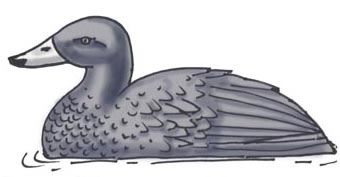

They are found in New Zealand.
They live on fast flowing rivers.
They are about 20 inches long and slate blue, which helps them blend into their river habitat. They have a special thick edge to their lower bill for scraping insect larvae off rocks to eat.
They are great swimmers, even in the strong currents of rivers. They are active in the early morning and late evening, feeding and defending their habitat from other ducks. They are preyed on by weasels (stoats), dogs and cats, which were introduced to New Zealand.
They eat the early stages of water insects (larvae).
: Females lay between 4- 9 eggs. She keeps them warm (incubates) them until they hatch in a little over a month.
When you research information you must cite the reference. Citing for websites is different from citing from books, magazines and periodicals. The style of citing shown here is from the MLA Style Citations (Modern Language Association).
When citing a WEBSITE the general format is as follows.
Author Last Name, First Name(s). "Title: Subtitle of Part of Web Page, if appropriate." Title: Subtitle: Section of Page if appropriate. Sponsoring/Publishing Agency, If Given. Additional significant descriptive information. Date of Electronic Publication or other Date, such as Last Updated. Day Month Year of access < URL >.
Amsel, Sheri. "Duck (Blue)" Exploring Nature Educational Resource ©2005-2024. December 13, 2024
< http://www.exploringnature.org/db/view/Duck-Blue >

